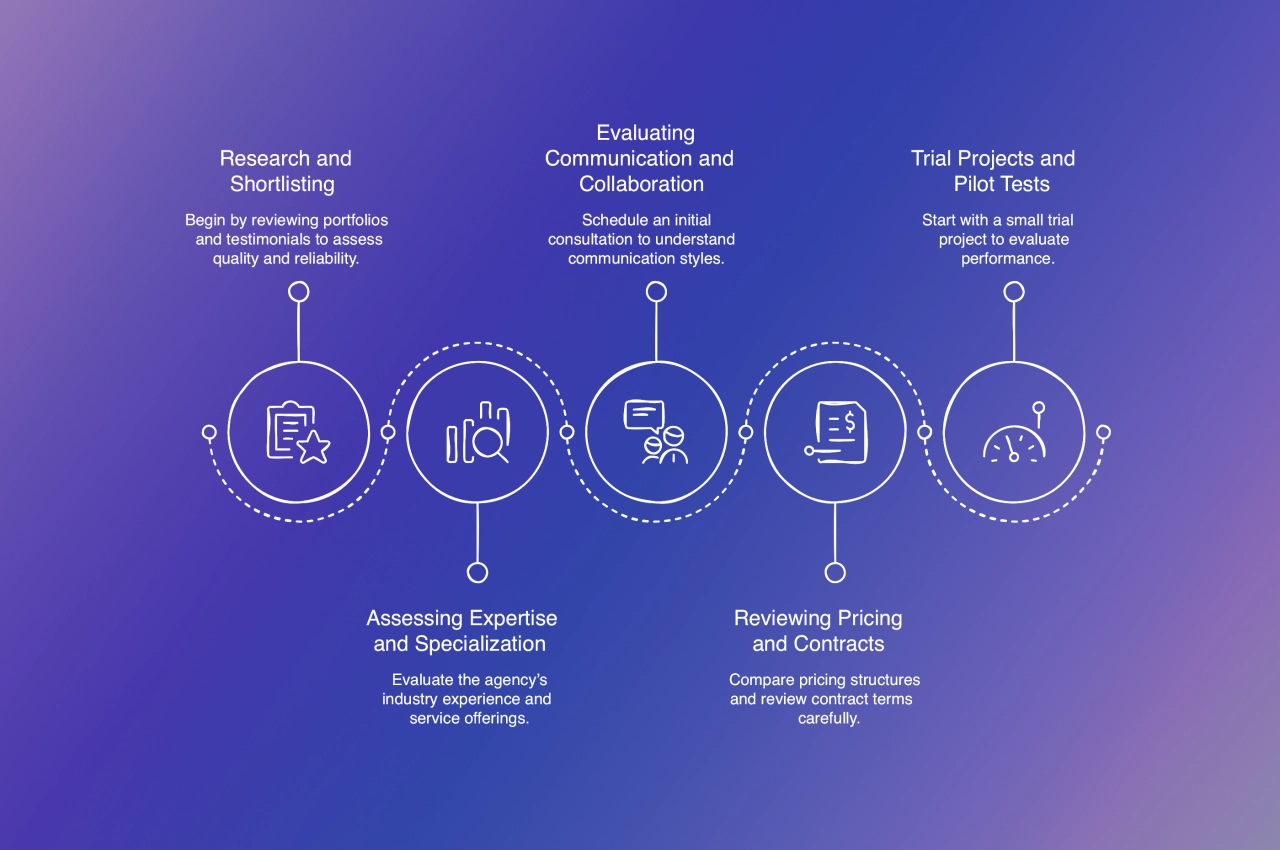- Agency owners considering offering copywriting services should partner with specialized copywriting agencies that offer white-labeled solutions, enabling easy reselling and avoiding concerns like deadlines and freelancer management.
- Collaborating with copywriting agencies allows agencies to experiment with new services, benefit from dedicated account managers, scale content production efficiently, and tap into pre-vetted talent, saving time and money.
- Copywriting agencies often bundle services into packages, charging a higher rate than freelance writers due to operational costs; typical pricing ranges from $0.10 to $1.00 per word.
Those running an agency are sooner or later playing with the idea of expanding their services. They want to grow their brand by offering new services, such as content or copywriting. But simply hiring a copywriter for the job won’t get you very far. Copywriting encompasses much more than just writing content.
The good news is that there are countless companies out there that already offer copywriting for agencies. They are active in the B2B segment and only offer their copywriting services to agencies, often in a white-labeled form. This would allow you to easily resell those services, and offer them as your own. You won’t have to think too much about deadlines, writing for the target audience, or managing a pool of freelancers.
Let’s take a look at what copywriting agencies have to offer, what to keep in mind when hiring one, and where to find them in the first place.
What is a copywriting agency?
A copywriting agency is a company that exclusively produces content for its end clients. These agencies have niched down their services into providing a specific option, namely copywriting. They are usually a sub category of the more general digital marketing agency group.
Some companies employ full-time agency copywriters that work in-house, others work with freelancers, or a mix of both. The latter allows them to easily scale up their operations during peak weeks, as they can tap into their pool of freelancers.
In the last few years, pure copywriting agencies have become rare. Most of them also offer other related services, such as blog content writing, case studies, white papers, or anything else related to content. In a few cases, they even expand outside the content space, and offer graphic design or social media management. Very few agencies focus exclusively on actual copy, meaning short-form content such as product descriptions for ecommerce companies, websites, or landing pages.
Best copywriting agencies of 2025




The agency vetting process
Selecting the best copywriting agency for your needs involves a thorough vetting process to ensure you partner with a reliable and high-quality service provider.
Here’s a step-by-step guide to help you navigate this crucial process:
1. Research & shortlisting
Portfolio review: Begin by reviewing the agency’s portfolio to assess the quality and diversity of their work. Look for projects similar to yours to gauge their expertise in your industry.
Client testimonials: Check for client testimonials and case studies that demonstrate the agency’s ability to deliver results. Positive feedback from past clients can be a strong indicator of reliability.
2. Assessing expertise & specialization
Industry experience: Evaluate the agency’s experience in your specific industry. Also check if they have expert writers that know about your niche.
Service offerings: Ensure the agency offers the range of services you need, whether it’s content strategy, SEO copywriting, or brand messaging.
Geographical focus: If you want to hire an English-writing agency, select one based in the U.S. They better understand the culture and can tailor content to your needs.
3. Evaluating communication & collaboration
Initial consultation: Schedule an initial consultation to discuss your project requirements and goals. This interaction can provide insights into the agency's communication style and responsiveness.
Project management: Inquire about their project management processes. A well-organized agency will have clear workflows and timelines, ensuring smooth collaboration.
4. Reviewing contracts & pricing
Contract terms: Review contract terms carefully, including payment schedules, revision policies, and ownership of the final content.
Pricing structures: Compare service pricing to ensure they align with your budget. Be wary of agencies that significantly undercut market rates, as this could indicate lower quality work.
5. Trial projects & test the waters
Trial projects: Consider starting with a small trial project to assess the agency's performance before committing to a long-term contract. This allows you to evaluate their creativity, adherence to deadlines, and overall quality.
Performance metrics: Establish clear performance metrics to measure the success of the trial project. This could include engagement rates, conversion metrics, or other relevant KPIs.

By following these steps in the agency vetting process, you can confidently select a copywriting agency that meets your needs and delivers high-quality, effective content.
How much do copywriting agencies charge?
Professional copywriting isn’t cheap, but some agencies offer their services for a very low rate. As always, quality costs money, and that is also true for this type of service. Some agencies target businesses with low budgets, others have hired creative copywriters who excel at what they do—and they charge above market rates.
To get a general idea of what to expect, you can look at the prices copywriters charge, which can be anywhere from $0.10 to $1.00 per word. A professional copywriter will charge at least $0.30, most won’t lower the price below $0.50, and try to go as close to $1.00 per word as possible.
With over seven years of digital marketing experience and real-life experience, my copywriting service rate for 2024 is between $.50-$.80/word with a max of 2,000 words.
 Elna Cain,
elnacain.com
Elna Cain,
elnacain.com
With agencies, however, it’s a bit different. They need to pay their writers and add a markup for their operations. They also rarely offer their services on a per-word basis, and instead prefer a productized service model. This means that they bundle their copywriting services into a package, for instance four blog posts per month (6,000 words in total) for a specific amount. Let’s assume they pay their writers $450 per 1,500-word blog post, and want a 30% margin, the calculation would be:
(450 × 1.3) × 4 = 2,340
The agency will probably round the price for four blog posts up to $2,399 per month.
You should hire copywriting agencies
As this blog post demonstrates, a copywriting agency provides you with useful resources that you just cannot kick-start without a major investment and a lot of trial and error. Those looking to scale their operations quickly and safely will realize that this is the easier option over hiring copywriters, and creating your own in-house solutions. Plus, you can always do that later once you have a stable amount of clients that are looking to submit copywriting projects to you. Until then, find agency partners you can rely on, and keep doing what you’re already great at.











